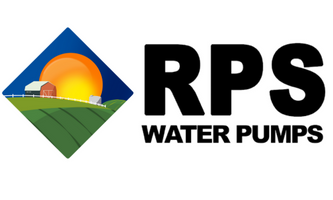

Answering Your Water Pump Questions
with RPS Engineer Mike
How do well drillers determine flow rate?
Production rates are a valuable number to know when you first drill a well. First and foremost they help you determine how large a pump your well can handle. As a general rule you don’t want a 10 GPM pump in a 5 GPM well, and the truth is depending on where you are in the States you’ll be looking at well production values anywhere from <1-100+ GPM. Making sure whoever ends up drilling your well also gives you a well production value is highly important!
But let’s say you have a well on your property sitting there empty. How would you possibly go about determining any numbers of value? Our specialists are pretty great, but we can’t materialize well metrics out of thin air, so we’ll need you to figure out some important numbers including Static Water Level (SWL) and Drawdown (or Flow Rate).
SWL is pretty simple: just grab a fishing line with a weight or a similar apparatus and thread it down the well until you feel it breaking through the surface tension of the water. Go ahead and measure that value. At the same time you can measure the overall depth of your well, to gauge how many feet of standing water you have to work with. As a general rule, we recommend placing your RPS Water Pump 20’ above the bottom of the well.

To determine your production level, you’ll need access to a water pump, which can either be rented locally or purchased from us. In this scenario you would wire and plumb up your pump and place it below the SWL (say 100’ below), and then turn it on. Over the course of a couple hours, you may eventually notice a reduction in water flow; turn off the pump! Regardless if you notice a reduction or not, after a set period (maybe 2-3 hours) you’ll want to turn off the pump and measure the SWL again. After another set period (maybe 10 minutes), measure the SWL one more time. The difference between the last two SWL levels will allow you to determine production rate. Let’s say for example that after a couple hours of pumping your SWL has dropped from 50’ to 140’, and then 10 minutes after it’s recharged to 60’. So within 10 minutes the water level had increased 80’. If this is a standard 4” well, 80’ of water is equivalent to about 52 gallons1. Divide that 52 gallons by 10 minutes and you have a production rate of about 5.2 GPM!
Obviously this test isn’t perfect, and there are other ways to determine production level, but this is one of the simpler tests out there. Some common hiccups you may run into include your initial SWL not budging after a couple hours. I’ve had numerous calls with well drillers who told me something along the lines of “we threw a 50 GPM pump down the well and the static never changed, so we’re calling the production 50 GPM+”. It’s pretty common in the well drilling business to have an effective maximum you tell your customers to just steer clear of; and while it’s not an accurate value it’s still helpful if you only need 10 GPM to run your household. If production levels are high you could also reduce the time between your second and final SWL measurement to only a couple of minutes, that way you don’t just bump up against your original SWL measurement.
If you still have questions about well production, or need a pump to determine what your well production value is, we’re happy to help! Our specialists work directly with DIY customers who aren’t afraid to get their hands dirty. We have a range of pumps and accessories folks mix and match with to get the best bang for their buck! And since we don’t make commission, there’s no pressure to buy right away, just somebody on the other line who works with people like you every day. You can call us at (855)-560-5670 or email us at help@ruralpowersystems.com. We look forward to going over your project with you!
1 This formula is the area of a circle multiplied by total height of recharged water column which is equivalent to (4π*80*12 = 12,064 In3 = 52.2 Gallons)
Take the Next Step to Water Independence
Learn More About Water Pumps
-
 If you’re considering replacing a well pump and it’s your first time, you may have questions about long it may take. We often say a full install only has to be a couple of hours, but is that actually accurate?Read now
If you’re considering replacing a well pump and it’s your first time, you may have questions about long it may take. We often say a full install only has to be a couple of hours, but is that actually accurate?Read now -

How many GPM is a good well pump?
Water needs can differ significantly depending on circumstances, and you may need a submersible well pump with a significantly higher or lower flow rate, depending on household size, irrigation needs, and sprinkler use.Read now -

Can you put in too big of a pressure tank?
When it comes to sizing a well pressure tank, there really isn’t an upper limit as to how big of a tank you can put in. There are some pros and cons to different size pressure tanks, and they can have an impact on the lifespan of your pump.Read now




